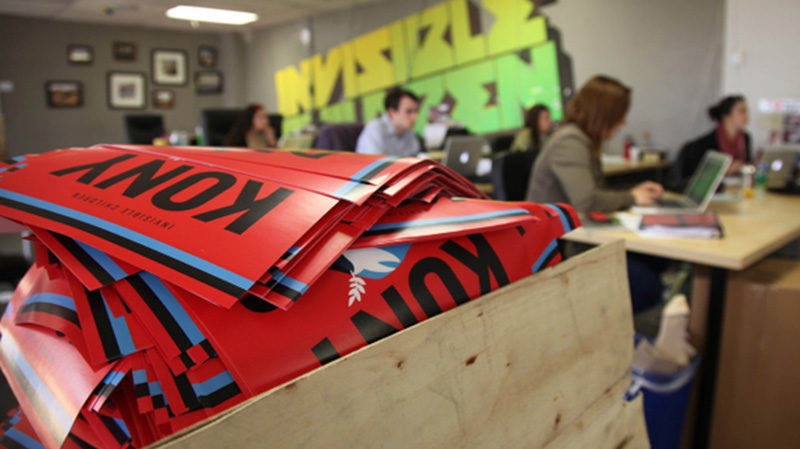Keeping up with the #Kony2012 controversy
It’s taken a few days, but Joseph Kony’s now-infamous last name has finally disappeared from my list of trending Twitter topics. And considering how viral Invisible Children‘s Kony 2012 film and the ensuing controversy were, that’s quite a feat.
Like many others, until only a few days ago, I was completely unaware of Kony, head of Ugandan guerrilla group the Lord’s Resistance Army, and had no idea why I should want to “stop” him. Being late to the bus, I arrived just in time to see the plethora of shared links to the video—accompanied by disclaimers, warnings, and criticisms. And this is what I found most intriguing: the questions. How can we criticize something that questions our collective conscience? Of course I care if children are still being forced to fight wars that they should be far away from. What will not watching this video say? What does joining a campaign I knew so little about yesterday say about my ability to digest media hype?
- In Joseph Kony 2012: A Model of Modern Campaigning, Matt Warman of The Telegraph doesn’t criticize the campaign itself, but addresses its success in gaining momentum and support as a film. He also sheds light on the ramifications of using a mainstream medium to breach bigger battles: “But the internet, for all that it contains all the world’s information in one place, has turned complex African and global politics into a single issue. The world wants to #stopkony but the long list of complex issues that need solutions remain as long it ever was. More people may now know about Joseph Kony—but the web has not helped us to work out whether the campaign to capture him really is now more important than it was just a few days ago.”
- The Los Angeles Times offered similar opinions in James Rainey’s ‘Kony 2012’: Two Sides to Being a Digital Media Sensation roundup, faulting the video for “oversimplifying the challenges in Northern Uganda.” However, a quote from Rebecca Rosen of The Atlantic online raises the issue of how the video’s factual errors could potentially stain the credibility of the issue: “It would be a terrible outcome if those who initially pushed the video along were discouraged by this experience from further engagement, overlearning the lesson and believing there is no positive way for Americans to engage in the world abroad.”
- NPR took a different approach. In Fact Checking the ‘Kony 2012’ Viral Video, freelance reporter Michael Wilkerson fact-checks the film and explains the controversy. In a radio broadcast and transcript available on the site, Wilkerson addresses the futility of “awareness” via social media: “[T]he goal is to raise awareness, and you define awareness as more than just ‘I know Joseph Kony’s name, and I’ve watched this video, and I shared it on Facebook.’ Awareness means understanding some basic facts about where the [Lord’s Resistance Army] is and where Kony is today. Because if you want to stop him, you have to understand that he has a tiny force scattered in a vast jungle area across three countries. And so it’s not simply a matter of flicking a switch and saying, ‘Yep, we voted—let’s stop Kony now.'”
- On CBC.ca‘s site Strombo.com, in the updated version of George Stroumboulopoulos’ Kony 2012 – The Filmmakers Respond to Their Critics, Stroumboulopoulos contextualizes the video, listing some of the major issues regarding its facts and publicity. The article also links to other news sites like The Independent and a blog called Justice in Conflict by a Canadian human rights scholar, offering some critique of these sources in relation to the issues at hand, and includes Raymond Provencher’s 2010 National Film Board of Canada documentary Grace, Milly, Lucy… Child Soldiers.
- And The Guardian‘s Reality Check with Polly Curtis featured Kony 2012: What’s the Real Story? by Polly Curtis and Tom McCarthy; it preceded a session of live blogging, gathering opinions from editors, writers, NPO directors, and readers, among others. The live blog included a clip of Ugandan journalist Rosebell Kagumire speaking about the Kony video, as well as one produced by The Guardian capturing the reactions of London children after watching the viral documentary. The session also featured user-submitted screen caps of Kony 2012 merchandise—available on eBay—and YouTube statistics of the Kony doc’s success (including number of views and audience demographics).














